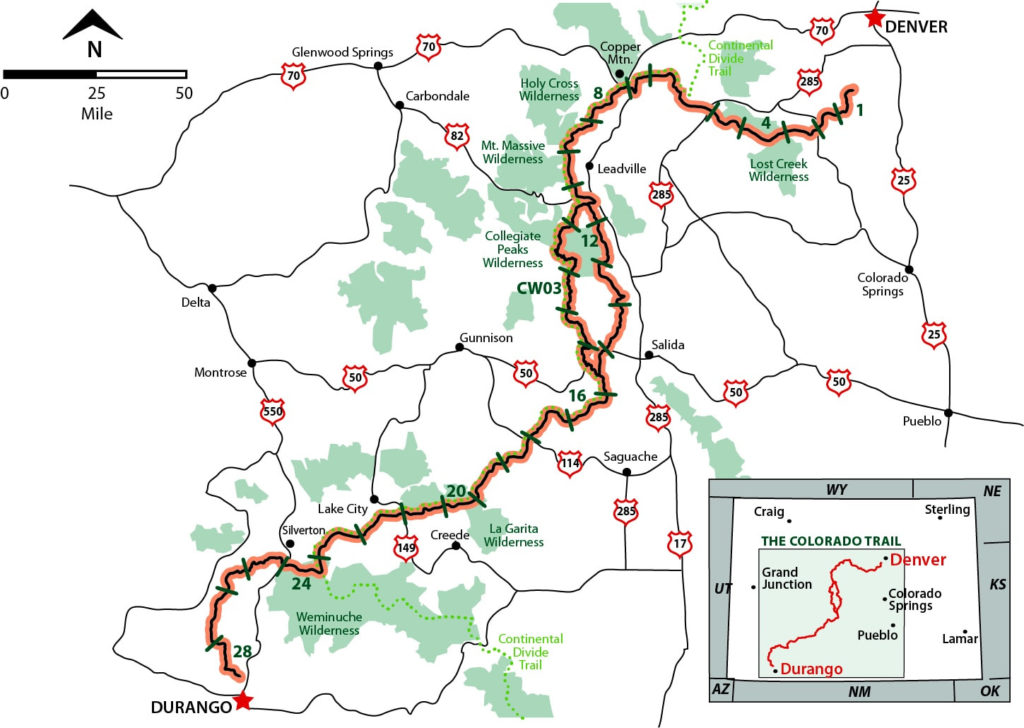Chris Holmes is one of those serious outdoor lovers that eats, breathes and sleeps adventure. Chris spends most of his time choosing between snow sports, sea kayaking, and long distance trail hiking. Chris is also a connoisseur of outdoor gear and though years of putting equipment to the serious test, has come down with a set of backpacking gear he likes. Of course it is still evolving as it always will, and each trip is different and calls for different selections of some items depending on things like weather, length, type of adventure, etc.
Last summer Chris took a Lucky Sheep Rewilder 20 on the Colorado Trail and spent two months doing his first hike with a wool sleeping bag. Chris has also been getting into the paleo diet and it was also his first trip attempting to do it paleo. We had an interesting conversation and these are some of the key points about his trip and his reflections on what worked and what needed improving.
Food:
First off I was intrigued that Chris has some of the same feelings and observations as I do about many things including paleo diet. Paleo is another word for Ancestral Health and this looks at health from an evolutionary standpoint. In other words, what did our ancestors eat and what other factors did they have which modern humans have lost?
So many people go backpacking, camping and spending time in nature which covers some of the principles of ancestral health. We get grounding, healthy movement, natural sun exposure, connected to temperature extremes which creates a resilient metabolism. However the one thing that has been lacking to make the picture complete is the food. Because animal proteins and fats give the body a natural immune boosting advantage which in turn helps us to adapt to the stresses placed by living in these outdoor extremes, away from the climate controlled environments of the city.
Native Americans were hunter/gatherers and they made a travel friendly food of dried jerky and pemmican. Pemmican is a traditional food that, for centuries, played an important role in the diet of various Native American tribes. In time it was discovered and adopted by Western explorers, trappers, scouts and others who roamed the vast North American wilderness during frontier days.
The word is derived from the Cree word pimîhkân, which denotes “grease” or “animal fat”. This was the primary staple. This food was so ‘shelf stable’ that they would bury a stash of it along their migration routes so it would be there when they returned months or even years later. In fact a group of archaeologists discovered a stash 200 years old that was still edible.
The backpacking diet typically consists of grain based foods which are quick and easy to prepare as well as relatively inexpensive. Things like oatmeal, bread, rice, potatoes, peanut butter, mac and cheese are everyday fare for most trail enthusiasts. These foods also are notorious for depleting one’s reserves of minerals and compromising hiking performance.
Since Chris discovered paleo recently he couldn’t go back to the old backpacking foods. His original plan was to make his own pemmican before the trip. However that didn’t happen so he relied on a new brand of pemmican called The Carnivore Bar. This is a convenient bar made essentially the way it has been made in the past, using grass fed, dehydrated and pulverized beef and then mixed with tallow to create a chewy and nourishing no-cook meal. Chris relied on these bars for his main staple.
The other things that sustained him were dried fruits, mostly mango and dates, as well as bone broth powder, raw parmesan cheese, butter, coffee, freeze dried egg powder. He also started eating rice towards the end because the pemmican was draining his credit card.
Packing:
Chris carried an 80L. Dyneema fabric backpack and he used it to the hilt. He traversed up to 15 days without resupply so he at one time carried 30 pounds of food. This on top of his 20 lb. base weight brought his pack up to 50 lbs. For a time. Part of the reason for these extra long stretches was the fact he was looking for a Whole Foods store which would carry the Carnivore Bar and other quality ingredients he was used to. He also used a Dyneema tarp and a hammock when he could.
Lessons Learned:
Looking back, he believes the best way to do this is 1) make your own pemmican before leaving and 2) send care packages to strategic drop off points along the route. This would have made his trip less stressful and less expensive.
Sleeping Bag:
Chris believes the Rewilder Wool Sleeping Bag excelled at through hiking. He carried the Rewilder Wide version which compresses into a 20 liter stuff sack (the standard fits in a 15 liter stuff sack). Wool is definitely bulkier and heavier than a comparable down sleeping bag. However Chris felt its advantages outweigh the disadvantages. As long as he had room in his pack he felt it worked. Later in the fall, when he hiked the Vermont Long Trail (100 miles), he switched out his Rewilder for a down bag because he needed more room in his pack for longer periods between resupplies. However he always missed his wool and felt his sleep was compromised by the down. He plans to do the Appalachian Trail North to South next, with his favorite Rewilder Lightweight Wool Sleeping Bag.


